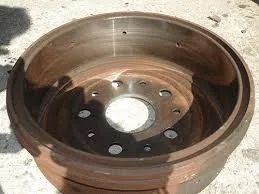
-
 Afrikaans
Afrikaans -
 Albanian
Albanian -
 Amharic
Amharic -
 Arabic
Arabic -
 Armenian
Armenian -
 Azerbaijani
Azerbaijani -
 Basque
Basque -
 Belarusian
Belarusian -
 Bengali
Bengali -
 Bosnian
Bosnian -
 Bulgarian
Bulgarian -
 Catalan
Catalan -
 Cebuano
Cebuano -
 Corsican
Corsican -
 Croatian
Croatian -
 Czech
Czech -
 Danish
Danish -
 Dutch
Dutch -
 English
English -
 Esperanto
Esperanto -
 Estonian
Estonian -
 Finnish
Finnish -
 French
French -
 Frisian
Frisian -
 Galician
Galician -
 Georgian
Georgian -
 German
German -
 Greek
Greek -
 Gujarati
Gujarati -
 Haitian Creole
Haitian Creole -
 hausa
hausa -
 hawaiian
hawaiian -
 Hebrew
Hebrew -
 Hindi
Hindi -
 Miao
Miao -
 Hungarian
Hungarian -
 Icelandic
Icelandic -
 igbo
igbo -
 Indonesian
Indonesian -
 irish
irish -
 Italian
Italian -
 Japanese
Japanese -
 Javanese
Javanese -
 Kannada
Kannada -
 kazakh
kazakh -
 Khmer
Khmer -
 Rwandese
Rwandese -
 Korean
Korean -
 Kurdish
Kurdish -
 Kyrgyz
Kyrgyz -
 Lao
Lao -
 Latin
Latin -
 Latvian
Latvian -
 Lithuanian
Lithuanian -
 Luxembourgish
Luxembourgish -
 Macedonian
Macedonian -
 Malgashi
Malgashi -
 Malay
Malay -
 Malayalam
Malayalam -
 Maltese
Maltese -
 Maori
Maori -
 Marathi
Marathi -
 Mongolian
Mongolian -
 Myanmar
Myanmar -
 Nepali
Nepali -
 Norwegian
Norwegian -
 Norwegian
Norwegian -
 Occitan
Occitan -
 Pashto
Pashto -
 Persian
Persian -
 Polish
Polish -
 Portuguese
Portuguese -
 Punjabi
Punjabi -
 Romanian
Romanian -
 Russian
Russian -
 Samoan
Samoan -
 Scottish Gaelic
Scottish Gaelic -
 Serbian
Serbian -
 Sesotho
Sesotho -
 Shona
Shona -
 Sindhi
Sindhi -
 Sinhala
Sinhala -
 Slovak
Slovak -
 Slovenian
Slovenian -
 Somali
Somali -
 Spanish
Spanish -
 Sundanese
Sundanese -
 Swahili
Swahili -
 Swedish
Swedish -
 Tagalog
Tagalog -
 Tajik
Tajik -
 Tamil
Tamil -
 Tatar
Tatar -
 Telugu
Telugu -
 Thai
Thai -
 Turkish
Turkish -
 Turkmen
Turkmen -
 Ukrainian
Ukrainian -
 Urdu
Urdu -
 Uighur
Uighur -
 Uzbek
Uzbek -
 Vietnamese
Vietnamese -
 Welsh
Welsh -
 Bantu
Bantu -
 Yiddish
Yiddish -
 Yoruba
Yoruba -
 Zulu
Zulu
Steps to Machine a Brake Drum Efficiently and Effectively for Optimal Performance
Steps for Machining a Brake Drum
Machining a brake drum involves several precise steps to ensure the component meets the necessary specifications and functions effectively within the braking system. Below is a detailed list of the steps typically involved in this process.
1. Material Selection The first step is to choose the appropriate material for the brake drum, commonly cast iron or aluminum, based on durability and thermal properties.
2. Initial Inspection Once the material is selected, an initial inspection is conducted to check for any visible defects, such as cracks or irregularities in shape. This ensures that only quality materials are processed.
3. Cutting to Size The raw material is then cut to the approximate size required for the brake drum. This is usually done using a saw or a band saw, which helps in forming a rough shape before further refining.
4. Lathe Setup The next step is to set up the lathe machine. The piece is securely clamped in the lathe, and all appropriate safety checks are performed to ensure the setup is secure and ready for machining.
5. Turning Operations Turning is then performed, which involves rotating the brake drum material against cutting tools. This process helps create the desired outer diameter and shoulder profiles of the drum.
list the steps for machining a brake drum

6. Boring After turning, the internal surface of the drum is machined using a boring tool. This step is crucial as it creates a smooth inner surface where the brake shoes will contact.
7. Facing The end faces of the brake drum are then machined to ensure they are flat and meet specific tolerances. Faced surfaces are crucial for accurate alignment in the braking system.
8. Drilling Holes If the brake drum requires mounting holes, a drilling operation will be performed. Proper alignment and measurement are vital during this step to ensure the holes are accurately positioned.
9. Finishing After all machining operations are completed, the brake drum typically undergoes a finishing process, such as grinding or polishing. This enhances the surface finish and ensures that the drum meets required tolerances.
10. Final Inspection The last step involves a thorough inspection of the finished drum. Measurements are taken to confirm that all dimensions meet specifications, and surface irregularities are checked before the drum is deemed ready for use.
11. Surface Treatment Optionally, surface treatments like painting or coating may be applied to improve corrosion resistance.
Following these steps ensures that the machined brake drum is reliable and performs optimally within the vehicle's braking system, enhancing overall safety and performance.
-
What Are Drum BrakesNewsJul.07,2025
-
Understanding Brake Drum MaterialNewsJul.07,2025
-
Semi-Trailer Brake Drum: A Key Component for Extreme Loads and Long-Distance TransportNewsJul.07,2025
-
Drum Brake Pads for SaleNewsJul.07,2025
-
Brake Drums for SaleNewsJul.07,2025
-
Brake Drum ManufacturerNewsJul.07,2025
-
Aluminum Brake Drums: The Future of High-Performance CarsNewsJul.07,2025
